The Enchanted Dagger
BÌNH LUẬN: Cây đao phép (D.Neel); by XuanThu on Mon Jan 19, 2009 2:16 pm.
(Excerpt from Alexandra David-Neel’s “Magic and Mystery in Tibet”, Dover Publications, Inc., 1971)
The ritual weapons, called phurba, generally used by lamaist magicians are made of bronze, wood or even ivory, shaped to resemble a dagger and often beautifully chiseled or carved.
A true initiate in the Tibetan secret lore, however, would scoff at the sorcerer and his repugnant practices. The power of the magic weapon does not, he thinks, depend on the substance of which it is made but is communicated to it by the magician himself.
Yet, as time goes on, a certain portion of this energy remains attached to the phurba. Its strength increases with the repeated use which is made of it in magic rites. The inert object becomes “possessed” just as an animated being could be.
On the other hand, it is said that the ritual implements which have served in coercion rites should not be kept in the house of a layman or of an uninitiated monk; for fear that the dangerous entities subdued by their means might use them to take revenge upon the possessor, if he does not know how to protect himself.
To that belief, David-Neel owed a few interesting objects which those who had inherited them begged her to carry away.
During a Daivd-Neel’s journey to Northern Tibet, she met a small caravan of lamas, and talking with them according to the custom along these trails where travelers are scarce, she learned that they were transporting a phurba which had become a source of calamity.
That ritualistic implement had belonged to a lama, their master, who had recently died. The dagger had started to work harm in the monastery itself. Two of the three monks who had touched it, had died, and the other one broke his leg by falling from a horse. The pole that held the banner of benediction, which was planted in the courtyard of the monastery, broke, and this is considered a very bad omen.
Frightened, yet not daring to destroy the phurba for fear of greater misfortunes, the monks had closed it up in a box. Soon after this, strange noise had been heard proceeding from the box.
They had finally decided to place the baleful object in an isolated cavern consecrated to a deity, but the cowherds living in that region threatened armed opposition. They recalled the story of a phurba that had moved through the air, wounding and killing numbers of men and animals. The cowherds did not want the phurba in their neighborhood.
The unfortunate monks who carried the enchanted dagger wrapped in many papers printed with charms and sealed in a casket, did not know how to get rid of it. David-Neel was curious to look at the miraculous weapon. The monks did not dare to take it out of the box, but after long discussions, they allowed her to do so by herself.
The phurba was a fine piece of ancient Tibetan art and she was seized with a desire to possess it. She offered them a good supper and they agreed to leave the phurba to her for that night. At nightfall, she took the phurba far enough away from their camping area. She stuck the enchanted weapon into the ground and sat down on a blanket to think out a way of persuading the monks to let her have it.
She had been there for several hours when she seemed to see the form of a lama appearing near the spot where she had planted the dagger. He reached out his hand and advanced to seize the magic dagger. Jumping it up, she grabbed it before the thief had been able to touch it. Looking around, she only saw the empty barren plain. The thief must have escaped when she was stooping down to pull the dagger out of the ground.
She ran to the camp. The man who had just returned or who came back after her must be the culprit. She found everyone one sitting up and reciting religious text and no one was missing. She suspected she must have been “seeing things”. She talked to the monks about what had happened. “Surely that was our Grand Lama!” they exclaimed. “He wanted to take back his phurba and perhaps he would have killed you if he had succeeded. Oh! You are a true accomplished meditator. Our spiritual father was a powerful magician; yet he could not take this phurba away from you. Keep it now, keep it and it will no longer do harm to anyone.” They were terrified that their lama magician had passed so close to them and delighted, at the same time, to get rid of the enchanted dagger.
They would not accept that David-Neel might have been deceived by a shadow or troubled by a dream. The consensus from the monks was the lama had come, she had seen him and he had not been able to seize the phurba; so she, by her superior power, became the dagger’s legitimate owner.
Scholar Duc Quy comments on “The Enchanted Dagger” by Alexandra David-Neel.
Translation by Horangi
In regions where sorcery thrives, tales abound of peculiar rituals involving objects such as Thiên linh cái (a woman’s skull) and Thiên linh chưởng (a dead person’s hand), as well as ritual materials such as the tongue of the dead, various effigies, foul-smelling water jugs (African practice), and more. Here, we delve into a distinctive narrative centered on the crafting of a magical dagger in Tibet.
Tibetan practitioners commonly utilize a short dagger called a “phurba” in their magical rituals. These daggers, crafted from copper, wood, or ivory with intricate designs, serve as focal points for their mystical energies. Through dedicated attention, practitioners aim to preserve and enhance the potency of these daggers, gradually infusing them with a sense of vitality. Consequently, rumors suggest that these enchanted daggers have been observed engaging in acts of violence, targeting practitioners who violate specific taboos during their rituals or seeking retribution against their owners if they fail to defend themselves. However, verifying these rumors proves challenging, as they often tend to be embellished to add intrigue to the stories.
Ms. David Neel recounted her encounter with a mystical dagger: One day, near the Mongolian border, she stumbled upon a group of wandering monks riding camels and hastily escorting a small chest wrapped in vibrant silk cloths. Upon inquiry, she discovered that the chest contained a magical dagger once owned by a renowned sorcerer who had passed away unexpectedly, leaving the dagger untouched. It had since brought misfortune upon the entire village. Two out of three monks had died instantly upon touching the dagger, while the third had fallen from his horse and broken his leg. The wind had even snapped the bamboo flagpole in front of the temple, a sign of great misfortune. Despite their fear, the monks dared not destroy the dagger; instead, they placed it inside the chest and adorned it with numerous talismans in an attempt to pacify its malevolent influence. However, loud noises emanating from the chest caused disturbances throughout the temple.
Ultimately, they decided to seal the chest inside a mountain cave. Yet, shortly afterward, numerous bizarre incidents plagued the nearby village: livestock, including cattle, goats, and sheep, inexplicably perished with short, deep wounds on their necks. The villagers vehemently opposed the presence of the dagger and threatened the temple with force. Consequently, the monks had no choice but to bury the dagger in the Mongolian desert.
Upon hearing the story, Mrs. David Neel’s curiosity was immediately aroused, leading her to express a keen interest in inspecting the dagger herself. Although hesitant to remove it from the chest, the monks granted her permission to examine it. Upon closer inspection, she discovered an intricately crafted dagger in the ancient Tibetan style. Its blade was wrapped in talismanic leaves, concealing any carvings from her view. Despite her strong inclination to keep the dagger, she found it difficult to articulate this desire and reluctantly returned it to be stored in the box.
Later that night, her desire to reexamine the dagger persisted, and the monks granted her permission to retain it for further inspection.
Waiting for a moment when she was alone, she ventured far from the monks’ campsite and carefully removed the talismanic papers to admire the dagger. Its steel blade shimmered under the moonlight, revealing its true beauty. She planted the dagger into the ground and sat beside it for several hours, pondering how to persuade the monks to relinquish it to her. Suddenly, a dark figure resembling a monk emerged, reaching out to grasp the dagger stuck in the earth. Acting swiftly, she snatched the dagger before the mysterious figure could touch it, causing the shadow to vanish. Suspecting that it had retreated when she reached for the dagger, she hurriedly returned to the campsite.
Upon her return, she found everyone gathered there, deeply immersed in prayer, with no one missing. Quickly recounting the recent events, she was informed that the shadow was not a thief but their late head monk. It seemed he might be attempting to reclaim the magical dagger, and if successful, he could pose a threat to her safety.
It seemed that the late head monk might have been trying to reclaim the magical dagger, which could potentially endanger Mrs. David Neel’s safety. Subsequently, the leader of the group recognized her as a Gomchen, a practitioner dwelling atop Thangu Peak, believing her authority surpassed that of their deceased head monk. This recognition explained why he couldn’t harm her. The monks all knelt before her, imploring her to keep the dagger, as they deemed her the only one worthy to wield it. They expressed their concerns, stating, “We went through great effort to bury it deep in the desert, but who knows, it might still cause more trouble for the people of Mongolia there.”
Without hesitation, Mrs. David Neel accepted their offer, having desired the dagger since she first laid eyes on it. And from the moment she took possession of the enigmatic dagger, it never brought harm to another soul.
When ordinary individuals encounter such narratives, they often react with a mix of awe, bewilderment, or even horror, as these tales frequently stretch beyond the bounds of reality. For instance, accounts where spirits supposedly perish upon encountering the dagger or where animals are mysteriously slaughtered in large numbers may seem excessively exaggerated. However, more credible incidents, such as a monk suffering a broken leg or a chest emitting eerie noises, lend an air of authenticity.
On the other hand, those well-versed in mystical traditions can provide rational explanations for these occurrences, dispelling the extraordinary terror associated with them. These phenomena are often attributed to divine spirits employing lesser spirits to orchestrate events that induce fear in villagers, thereby nurturing a belief in the existence of spiritual entities. Consequently, such beliefs ultimately lead to the acknowledgment of God and higher deities.
Stories of mystical artifacts like magical skulls, enchanted daggers, talismans, spells, and other supernatural phenomena are widespread across Asia. In Western magical traditions, Egyptian amulets serve as a foundation and typically feature symbols such as stars, triangles, crystal balls, intricate patterns, or imagery associated with King Solomon from the Bible. Compared to the East, Western magical practices are less overt due to a smaller number of practitioners. Nevertheless, Western cultures frequently report experiences involving demonic apparitions, moving objects, or disturbances in homes (poltergeists).
In China, practitioners often enchant wooden swords or inscribe talismans on gold paper adorned with red characters. In Tibet and Nepal, they employ small steel, ivory, or metal daggers intricately engraved, onto which sorcerers cast spells. Sometimes, they utilize talismans, skulls, or the hands of the deceased to practice, aiming to control the souls of the dead through necromancy. In Myanmar, Thailand, and Cambodia, they create silver plates inscribed with sacred texts or talismans, which they wear on a thread. Typically, practitioners wear 5 to 7 silver plates around their waist (known as ca tha), or they draw magical symbols on paper or fabric.
The saying “to judge a man by his actions” stresses the importance of evaluating individuals based on their behavior. By observing a sorcerer’s cultivation methods and the symbols they employ, one can discern whether their intentions are virtuous or malicious, righteous or evil. Virtuous individuals often gravitate toward symbols like Buddha statues or other benign icons, although the selection of symbols does not necessarily equate to their actual spiritual power. Conversely, those with malicious intent frequently choose symbols such as skulls, swords, dry hands, or the tongue of the deceased, reflecting their malevolent thoughts and a desire to exploit supernatural powers for deceit or harm, akin to gangs in the mortal realm.
However, practitioners of dark magic may initially harm others but ultimately inflict harm upon themselves. Demons capitalize on this vulnerability, presenting numerous challenges to teach them lessons and ultimately punishing them for violating supernatural laws. Similarly, forming alliances with gangs can lead to perilous consequences such as mutual vendettas or legal repercussions, while involvement in dark magic exposes individuals to similar dangers, including retaliation or legal prosecution, imprisonment, or even execution.
Due to their limited understanding of supernatural principles, sorcerers and adepts often resort to a practice known as “training the dead into militiamen.” Divine Emissaries, individuals approved by the Divine, possess the ability to command tens of thousands of celestial soldiers and generals from the Celestial Court with just a talisman, akin to how a worldly general can mobilize vast armies. However, sorcerers, ritual masters, shamans, and lower-level adepts—such as charlatans or con men—who lack divine approval and are not among the Five Heavenly Armies, must enlist the deceased into their service.
This process is akin to a gang leader recruiting underlings. For instance, Chimdada, who practices black magic despite being a Buddhist practitioner, follows this approach. It indicates that Chimdada has not attained enlightenment and has not been granted military authority by the Celestial Court. Therefore, he must personally recruit the deceased to join his underworld militia, often seeking them out in graveyards.
Meanwhile, Mrs. David Neel’s sincere dedication to spiritual cultivation led the Celestial Deities to elevate her status by manifesting their powers through her. This demonstration of authority convinced the Tibetan Lamas that she could be entrusted with the enchanted dagger, as she possessed the power to control it. Similarly, the disciples of the Old Guru’s Secret Teachings, like Mrs. David Neel, possessed mystical powers, enabling them to dispel ghosts and confront underworld adversaries.
In summary, instances of demonic or supernatural phenomena are orchestrated by Celestial Deities for two purposes:
1) To validate the existence of the invisible realm, showcasing the reality of spirits and suggesting the presence of Divine Emissaries and Buddhas.
2) To bolster the credibility of authentic spiritual practitioners by providing opportunities to enhance their reputation.
In Esotericism Ranking:
– Practitioners utilizing skulls from the deceased hold the rank of Squad Leader, commanding around a dozen spirits.
– A Sergeant commands 3 or 4 ghosts.
– Platoon Leaders lead about 40 spirits.
– Company Commanders have authority over 100 spirits.
– Division Commanders command 10,000 spirits.
– Generals oversee tens of thousands of spirits.
– The highest echelon, akin to a Commander in Chief, represents the pinnacle of esoteric mastery. At this level, the practitioner commands an army of millions of spirits.
The ranking structure mirrors that of a military organization, with lower ranks corresponding to fewer spirits under their command.
Updated 4/13/24
Related Post
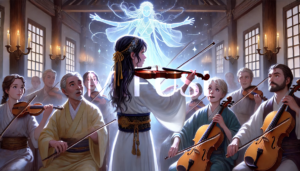
A Violin Performance by Divine Force
A Violin Performance by Divine Force LÀM ĐẠO VỚI CÂY ĐÀN VIOLIN posted by viendung on 07 Apr 2017, 12:04,...
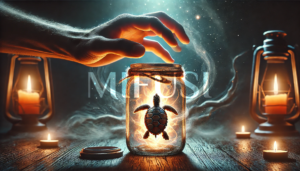
Vision of a detained baby turtle
Vision of a detained baby turtle Linh ảnh về con rùa bị nhốt posted by Hasu on 17 Jun 2017,...
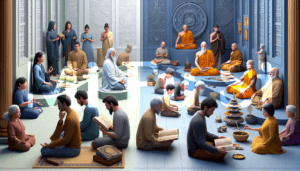
Spiritual pilgrims: Obstacles ahead
Spiritual pilgrims: Obstacles ahead (CHƯỚNG NGẠI CỦA NGƯỜI TU LÂU by chinhphong on Thu Oct 07, 2010 1:35 pm, translated...
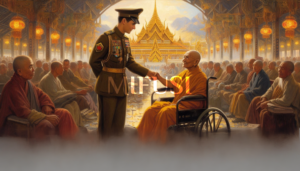
Story 14 – Invoking Uncle Ho
Story 14 - Invoking Uncle Ho Câu chuyện số 14 - Niệm danh cụ Hồ by ThầyGià on 12 November...
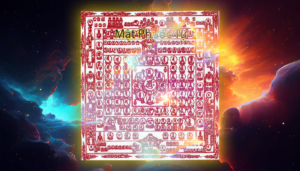
Chapter VI: V & VI – The Cundi Dharani spoken by the Mother of Seven Kotis Buddhas
V. The Cundi Dharani spoken by the Mother of Seven Kotis Buddhas Tang Dynasty, India, Tripitaka master Amoghavajra translated from...
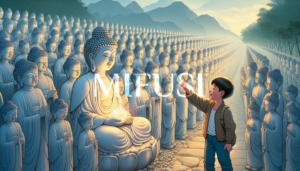
Children’s visions of Buddha
Children's visions of Buddha Báo cáo các em Khai nhãn thấy Phật Submitted by huynhd90 on April 18, 2013, 21:48...

THE PRECIOUS CELESTIAL SCROLL
THE PRECIOUS CELESTIAL SCROLL (Mầu nhiệm lễ thỉnh Thiên Thơ cho mẹ trước khi mất by ThuanThien on 29 Jun...

Chapter VI: VII – The Quintessence of Secret Buddhism: The five essentials Dharanis
VII. The Quintessence of Secret Buddhism: The five essentials Dharanis The Dharani: Um Lam (or just Lam). If one thinks...
